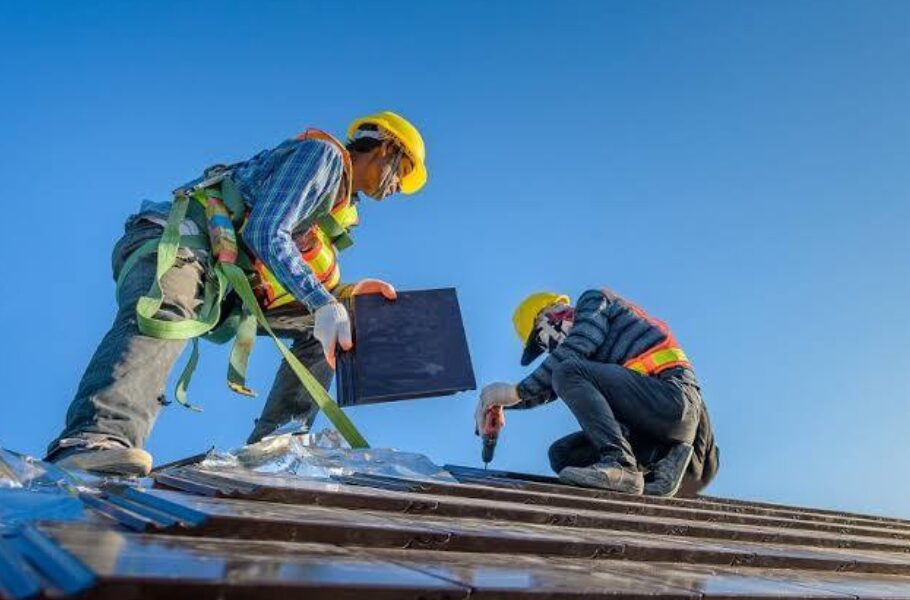Flat vs Pitched Roofs: Which Is Right for Your Property?

Flat Roof or Sloped Roof?
When deciding between a flat roof or a sloped roof, you are making a decision beyond personal preference. The style of your home, energy efficiency, weather resistance, initial construction cost and any future capability to build up, are all dependent on your selection. Homeowners pursuing new home construction or renovating their existing home must consider the functionality pros and cons of all choices, in addition to the best match with their lifestyle, budget and environment. Pitched roofs placement has long been considered timeless. Commonly found on single-family homes, chalets, and rural structures, pitched roofing’s slope adds an extra dimension to buildings like tile, slate, or wood roofs; it complements materials like tile, slate, or wood nicely and complements materials such as tile, slate, or even wooden flooring perfectly.
Pitched roofing roofs may even be preferred in regions that rely heavily on them due to climate factors. Flat roofs feature an impressively contemporary aesthetic. These distinctive roofs have become iconic of contemporary constructions and urban structures with clean lines; architect-designed houses featuring them and architectural houses by leading architects and urban structures are often featured with flat roofs as a symbol.
Cost of Construction: Simplicity Versus Complexity
Construction costs play an essential role when selecting the ideal roof. Flat commercial roofs installations tend to be cheaper to construct due to needing fewer components and smaller structures; construction time and labor costs can also be reduced with these roofs; however, they must ensure waterproofing capabilities through bitumen or synthetic membranes that vary in price depending on durability and quality. Pitched roofs require more complex structures as well as heavier weight. Materials like slates and tiles tend to be more costly, and installation takes more time. As such, initial costs might be greater; however, their longer lifecycle and greater resistance to weather could compensate. In the short run flat roofing could be cheaper; in the long term pitched roofing could prove more cost-effective.
Role of Drainage in Construction
Roof performance can be determined by various factors, including drainage of rainwater, thermal insulation, and any chance of development. Pitched roofs are highly recommended as rainwater drains due to their natural slope. This reduces stagnation and infiltration risks while simultaneously decreasing maintenance needs. In addition, their structure reduces wind load and uplift risks. Flat roofs, even with the addition of either slope for drainage, have a high incidence of waterproofing failure. Poor condition or design and building may mean that, if a flat roof fails and is covered in water by rain, it can create a flood situation; which leads to leaking and deteriorating the waterproofing system.
On the plus side, these flat roofs offer additional space—be it an additional terrace, roof garden, technical space extension vertically, or extension along its edges—their versatility in urban environments where every square inch counts! This makes flat roofs especially advantageous for urban settings where every square inch counts! Insulating both kinds of roofs can be either inefficient or useful if both are designed correctly. Pitched roofs have an additional benefit in that it provides greater air circulation underneath the eaves, which increases passive insulation, while flat roofs only use insulation that is structural and/or external—it may cost more to do, but still can be effective insulation in the right setting.
Safety and Maintenance
Maintenance may also be the one thing that allows roofs to go further with their life span, and yet many leave maintenance completely neglected. Usually, maintaining pitched roofs requires very little effort if they have been built properly with reliable materials. The pitch of the roof enables the roof to shed water or debris, so the roof is self-cleaning—scheduled maintenance on a pitched roof design may only require checking flashings, gutters or misplaced tiles. Slate or tiles, once installed and supplied with proper drainage can have long service life with only one opportunity for maintenance, which might be checking if tiles are intact or breaking.
On the contrary, flat roofs require greater care. Their horizontal surfaces attract dust, leaves, and water—which could wreak havoc with waterproofing systems if left alone. Regular maintenance must take place to avoid leaks and lengthen membrane lifespan—joints, drains, and any cracks should also be checked—however, with proper care, this type of roofing can last just as long as a sloped one, but with greater upkeep needed.
Climate Adaptability: Deliberations over Context
The climate of the area has an often vital role in what type of roof is best to use. A steeply sloped roof may perform best when there is a lot of rain or snowfall, because the water can shed well and snow does not last too long to build up enough to leak through or come off. Also, sloped roofs will do a better job with wind because they are more aerodynamically designed.
Flat roofs will best suit locations with extreme temperatures. Flat roofs have some advantages for shaded outdoor spaces and for solar panel arrays that can be reoriented with relative ease. They waste less roof space typically. Planting trees on them also enhances the thermal comfort of homes while lessening environmental impacts.
Integrating Equipment: Solar Panels and Air Conditioning
Integrating technical equipment is simpler when your roof has flat surfaces. Solar panels can be easily placed, ventilation or air conditioning systems installed without slope restrictions, and access is simpler for maintenance, making flat roofs ideal for smart homes and high-energy-performance homes. Roofs with slopes may provide less privacy but still accommodate equipment, provided their positioning and orientation are appropriately adjusted. Solar panels must be mounted onto inclined supports, which increases installation costs, but their exposure to sunlight may provide advantages when used in specific configurations.
Regulations and Town Planning: What Law Requires
It is important to get planning advice where the council has regulations regarding what roof you can add to your space. In some municipalities one type of roof is mandated, which all other buildings are using thus creating harmony between the architecture – for example old fashion buildings in older historic rural areas may require pitched roofs, while urban landscapes or new housing areas would have predominantly flat roofs. Make sure to comply with construction, insulation, and waterproofing standards of the requirements so you are able to obtain your permits and the construction can begin.
Wrong or Right choice
There is no wrong or right choice, whether you have a pitched or flat roof, because they both have their advantages and disadvantages. Once you have weighed the pros and cons of each roof type, you should feel more comfortable deciding whether to have pitched or flat roof.Your decision should depend on factors like aesthetics, cost, functionality in climate conditions and regulations, as well as regulations. Pitched roofs often attract attention for their classic charm, strength and easy upkeep while flat roofs and residential sanitary tend to draw people in with their contemporary styles, flexibility and design options – for homeowners the first step should be setting goals, consulting professionals about available options that will fit best into life style while finding what will work best suits them personally based on personal lifestyle choices that match up best with personal goals set for them individually based on personal goals set for you based on personal goals established when selecting an option best suited to you personally based on personal goals set for yourself based on lifestyle needs rather than being forced into selecting something not ideal that does not suit lifestyle needs but rather fits seamlessly into it.





